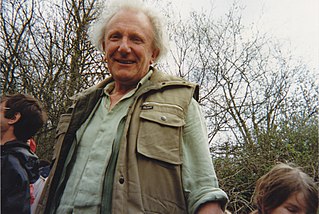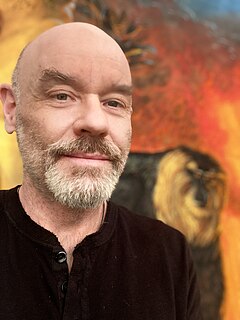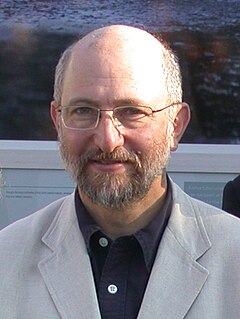Related Research Articles

Pierre Bonnard was a French painter, illustrator and printmaker, known especially for the stylized decorative qualities of his paintings and his bold use of color. A founding member of the Post-Impressionist group of avant-garde painters Les Nabis, his early work was strongly influenced by the work of Paul Gauguin, as well as the prints of Hokusai and other Japanese artists. Bonnard was a leading figure in the transition from Impressionism to Modernism. He painted landscapes, urban scenes, portraits and intimate domestic scenes, where the backgrounds, colors and painting style usually took precedence over the subject.

Peter Hill Beard was an American artist, photographer, diarist, and writer who lived and worked in New York City, Montauk and Kenya. His photographs of Africa, African animals and the journals that often integrated his photographs, have been widely shown and published since the 1960s.

Richard David Shepherd CBE FRSA FGRA was a British artist and one of the world's most outspoken conservationists. He was most famous for his paintings of steam locomotives and wildlife, although he also often painted aircraft, portraits and landscapes. His work has been extremely popular since the 1960s in limited edition print reproduction and poster form, as well as other media such as Wedgwood limited edition plates. He published five books about his art, including an autobiography.

Walton Ford is an American artist who makes paintings and prints in the style of naturalist illustrations, often depicting extinct species. Each of his paintings is a meticulous, realistic study in flora and fauna, and is filled with symbols, clues, and jokes referencing texts ranging from colonial literature, to folktales, to travel guides. The paintings are complex allegorical narratives that critique the history of colonialism, industrialism, politics, natural science, and humanity's effect on the environment.

Wild Africa is a British nature documentary series created and produced by the BBC. It explores the natural history of the African continent. It was first transmitted on 7 November 2001 on BBC Two in the United Kingdom and comprises six episodes. Each concentrates on a particular environment. The producers use aerial photography and wildlife footage to show how natural phenomena such as seasonal changes influence the patterns of life. Wild Africa was produced by the BBC Natural History Unit and narrated by Fergal Keane.

Charles Fracé was an American wildlife artist whose work was featured in more than 500 exhibitions, including a solo exhibition at the National Museum of Natural History of the Smithsonian Institution in Washington, D.C. Fracé painted over a hundred paintings from which limited edition prints were produced, which were consistently popular with collectors.
Clarence Tillenius, LL. D. was a Canadian artist, environmentalist, and advocate for the protection of wildlife and wilderness.

John Banovich is an American oil painter. He is known for his large paintings of wildlife. Banovich's work has appeared in many venues, including the Leigh Yawkey Woodson Art Museum’s Birds in Art show, the Hiram Blauvelt Art Museum, and the Salmagundi Club.
Olly and Suzi, Olly Williams and Suzi Winstanley, are two British artists who specialise in collaborative painting of endangered wildlife. Olly and Suzi met at Saint Martin's School of Art in London, in 1987, and developed their unique art making technique on an exchange to Syracuse University in New York from 1988 to 1989. Here they decided to graduate with a joint degree, despite protests from the board of directors.

Dahlov Ipcar was an American painter, illustrator and author. She was best known for her colorful, kaleidoscopic-styled paintings featuring animals – primarily in either farm or wild settings.

Steve Bloom is a South African photographer and writer. Son of journalist, novelist, and political activist Harry Bloom, he is best known for his photography books and essays as well as his large scale outdoor exhibitions called Spirit of the Wild.
Thomas Scott Kaplan is an American billionaire businessman, investor, philanthropist and art collector. Kaplan is the world's largest private collector of Rembrandt's works.
Nick Brandt is an English photographer. Brandt's work generally focuses on the rapidly disappearing natural world, as a result of environmental destruction, climate change and humans' actions.

Basil Ede was an English wildlife artist specialising in avian portraiture, noted for the ornithological precision of his paintings.

Gary Hodges is a British artist and publisher much admired internationally for his graphite pencil wildlife art. His original drawings and limited edition prints have sold widely in the UK and throughout the world and is collected by large numbers of ordinary citizens, many not previously seeing themselves as "art collectors". During his career he has sold over 110,000 limited edition prints from 130 editions. His popularity has influenced and encouraged many other artists to develop intricate styles with pencil. He has a close connection to various environmental and wildlife conservation groups for whom he provides considerable financial support.
Malcolm Whyte is an author, editor, publisher, and founder of the Cartoon Art Museum in San Francisco. He has produced nearly 200 books, 45 of which he has written or co-written. His taste is for unique, offbeat ideas with a sense of good humor and produced with an eye for color and beautiful graphics as represented by The Original Old Radio Game from 1965 to Maxon: Art Out of Chaos, FU Press, 2018.

Arthur Vaux Venner Radclyffe Dugmore (1870–1955) was a Welsh-born American naturalist and wildlife photographer, painter, print-maker and author. He turned from "hunting to capturing his subjects on paper and canvas."
Walter Alois Weber was an American mammalogist, animal artist, and illustrator for National Geographic. He was noted for his colorful and realistic-looking sketches and paintings of animals, particularly wild cats, Alaska Peninsula brown bears, American black bears, coyotes, and dog breeds, including retrievers, hounds, and sporting dogs. He also painted portraits of many other birds, mammals, and reptiles. His work in the National Geographic caught the public's attention from 1939 to 1968. In 1967, he was given the Conservation Service Award.

Kendra Haste is a British wildlife artist who produces both public and privately commissioned sculpture using galvanised chicken wire mesh to create wire sculptures of wild animals. She is a member of the Society of Wildlife Artists, the Royal British Society of Sculptors and the Society of Animal Artists. She lives in Surrey, England.
Alan M. Hunt is a British wildlife artist. Born in Redcar, in the northeast of England, he has been painting for nearly 60 years and is best known for his photorealism style and paintings of endangered animals.
References
- ↑ Tynan, Laurie. "The Big Cats/Elephants (Book)." Library Journal 107 (1982): 1886.
- 1 2 Fornora, Anne. "Guy Coheleach -- Artist and Hunter." Conservationist 42.3 (1987): 26-33.
- ↑ "The Society of Animal Artists - Exhibition Awards". Archived from the original on 2017-01-22. Retrieved 2008-07-11.